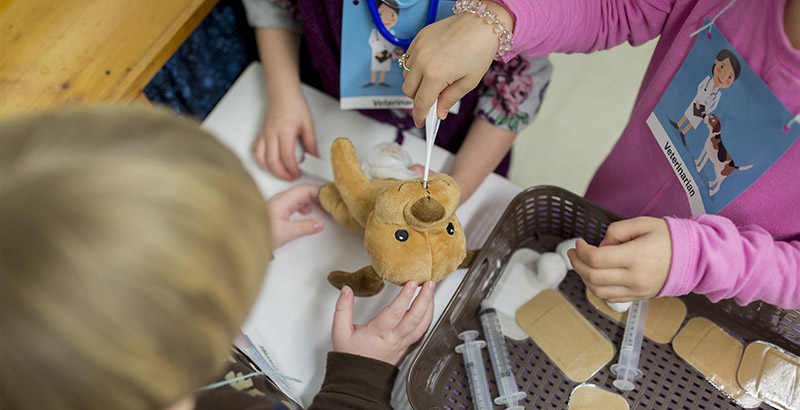Report: Pandemic ‘Erased’ a Decade of Growth in Pre-K Enrollment

Get stories like this delivered straight to your inbox. Sign up for The 74 Newsletter
Enrollment in state pre-K programs fell for the first time in two decades after a period of steady growth, according to a new report focusing on the 2020-21 school year.
Before the pandemic, states were serving 44% of 4-year-olds. Now they might not reach 40% over the next 10 years, the report found.
“The pandemic erased an entire decade of progress in preschool enrollment,” said Steven Barnett, senior co-director of the National Institute for Early Education Research, which released the report. He added that it was “minority children and children from low-income families who lost out most.”
As in past years, this year’s pre-K report provides an overview of how many children states serve, how much they spend per child and the quality features of programs that support children’s learning and development.
But this 19th edition also conveys the extent of the pandemic’s blow to states’ pre-K systems. Concerns about COVID and reluctance to participate in a virtual program topped the reasons thousands of parents decided to skip pre-K.
“It’s unacceptable to go back to where we were in March 2020,” said Education Secretary Miguel Cardona. “Our littlest learners need more.”
Cardona and Health and Human Services Secretary Xavier Becerra joined the Institute’s Monday call with reporters, signaling the Biden administration’s push for a larger federal role in public pre-K.
‘First order of business‘
Becerra highlighted passage of the Democrats’ American Rescue Plan, which many states have used to offset state budget cuts, pay pre-K teachers and keep programs open in spite of enrollment loss. Without federal relief, spending cuts to pre-K would have been much worse, the report said.
But Biden began his administration with a pledge to do much more — provide universal pre-K for all 3- and 4-year-olds. When last year’s annual report was released, early education advocates were still hopeful Democrats in Congress would pass Build Back Better, a domestic spending package that included $400 billion for child care and pre-K.
Momentum stalled, and the war in Ukraine and inflation have pushed some of the president’s education priorities aside. The Senate education committee recently held a hearing to draw attention to families’ struggles to find quality, affordable programs for young children, but a divided Congress is unlikely to address the issues soon.
Republican leaders don’t agree with Biden’s plan to address those challenges. Their early-childhood proposal would expand the existing federal block grant for child care. Democrats are still pushing to pass a broader plan without Republicans’ support.

Barnett said he hopes early-childhood legislation is the Senate’s “first order of business” this week, and added in the media call that the House plan, which passed in November “could find widespread support in Congress.”
Last Thursday, Biden returned to the topic at a Democratic fundraiser in Seattle, citing research findings on high-quality pre-K and the benefits of young children attending school — “not daycare.”
Overall, state funding declined for pre-K for the first time since 2014, by 3% — almost $255 million, adjusted for inflation. Twenty-six states cut state funding by at least 2%, including those with long-running universal pre-K programs, like Florida, Georgia and Oklahoma.
Arkansas, however, was among the 14 states that increased spending by at least 2%. The state kept its Arkansas Better Chance classrooms open the whole year. Individual classrooms only closed if there was a COVID outbreak.
“We continued to push through,” said Lori Bridges, director of early childhood programs for the Arkansas Department of Education. While enrollment fell by about 2,800 children at the beginning of the year, parents gradually became more comfortable with safety procedures, Bridges said, and by the end of the year, 87% of the slots were filled.
The report includes Arkansas among the 10 states “within striking distance” of serving at least 70% of their low-income 4-year-olds. The state, which targets its program to children in poverty, served over 10,400 4-year-olds last year, and would need to enroll about 8,600 more to reach 70%.
Federal funding for universal pre-K, Bridges said, would allow the state to offer free pre-K to middle class families, but she added that with limited staffing and classroom space, her state currently couldn’t implement such an expansion even if it had the funds to do it. “There would have to be some kind of phase-in,” she said.
Get stories like these delivered straight to your inbox. Sign up for The 74 Newsletter

;)
